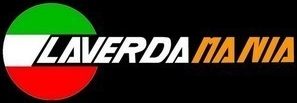
The MOTO LAVERDA Company was created in 1949 by Francesco LAVERDA who decided to diversify the production from its essentially agricultural roots. The consequences of the Second World War had ruined Italy and people was looking for a means of transport that would be cheap to buy and to drive.
The LAVERDA factory obviously directed its research towards this new demand and from 1949 to 1969 built small motorbikes of 75 to 200ccs, which had remarkable racing results in Italy.
Their success came notably in the 1950s in the most famous Italian races such as the Motogiro d’Italia or the famous Milano-Taranto, making these bikes very popular, increasing sales.
Nevertheless, the 1960s were less fruitful as the Italians progressively went from two to four wheels for their usual means of transport, the motorbikes being perceived more as a leisure or sports vehicle.
It was notably thanks to Francesco’s son, Massimo, that the LAVERDA Company was able to meet these new circumstances and renewed its success, proposing a large displacement parallel twin (650cc) in 1968. (A prototype had been displayed at the London Show in 1966.) The real revolution that this bike brought to the motorcycle world has never been sufficiently emphasized. Breaking radically with the transalpine methods of the time, its conception was inspired by some famous foreign productions, in particular the Honda CB 77s. Moreover, the factory didn’t hesitate to use quality foreign equipment (Bosch electrical fittings, Smiths speedos and rev counters, then Nippon-Denso, etc.) when the usual items supplied by some Italian accessory providers were not to the same level of quality. Finally, the factory was endowed with a string of highly qualified craftsmen and a top quality casting which led to superior quality frames and engines.
The result was not only an immediately reliable and competitive bike which won the Italian Moto Giro in its category just before it had rolled off the production line, but a bike which also had potential to evolve as its great sturdiness allowed the rapid upgrading of its capacity to 750ccs. The excellent endurance race results of these 750 S, SF then the fabulous SFC were also duly accompanied by a large sales increase and the 750 LAVERDA became highly revered, particularly in Europe and the U.S.A.
The LAVERDA Company wished, however, to further impress their mark and to offer an even more high-performance motorbike even though the Honda 750 Four had just been marketed.
LAVERDA’s aim was therefore quite clear – to offer the biggest-engined motorbike in the world, without exceeding the weight or the dimensions of the motorbike of reference at the time: the 750 Honda Four.
This goal materialised in 1973, after several prototypes, by the commercialisation of the 1000 Laverda, the first bikes with a very big engine on the market. This motorbike didn’t stop advancing until 1989, going from the very brutal 180°s, the cream of these being the Jota, the fastest motorbike in the world at the time, to the more « politically correct » 120°s which were the Jota 120, RGS, RGA and the SFC 1000.
Such is the very simplified tale of these legendary motorbikes.
Yet the most extraordinary thing is that this tale still continues today. LAVERDA still exists in the rider’s mind, hopefully we will rediscover in the future new Laverda motorbikes bringing again the character of their ancestors. Waiting for that, these old big twins and triples, most of which are now over twenty years old, continue to unite fans across the world, so far apart with regards their origins and their cultures, and yet brought so close through their common passion.

